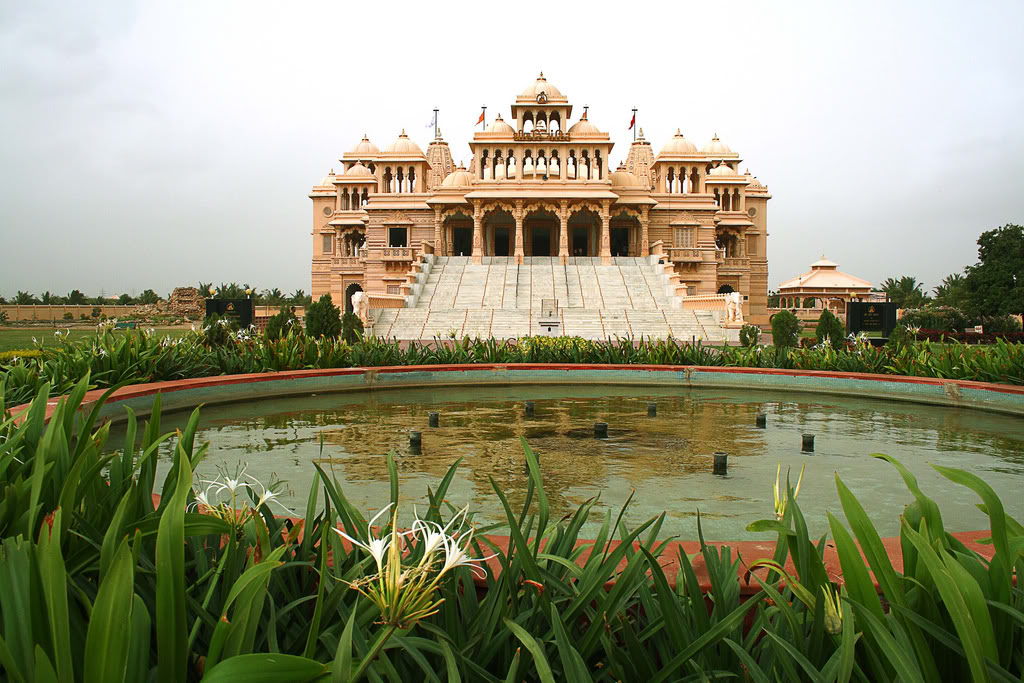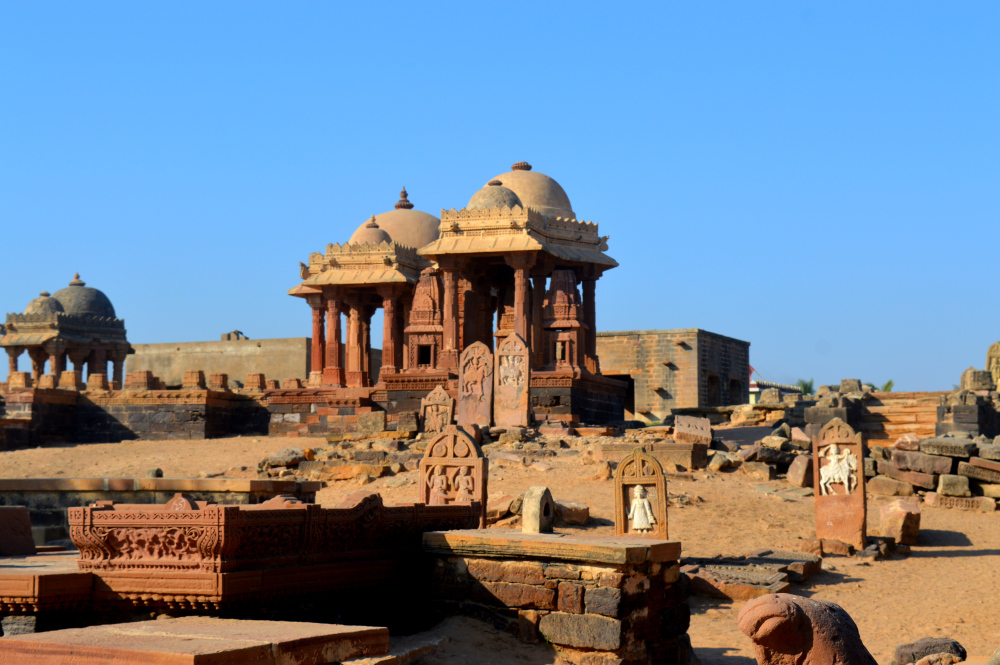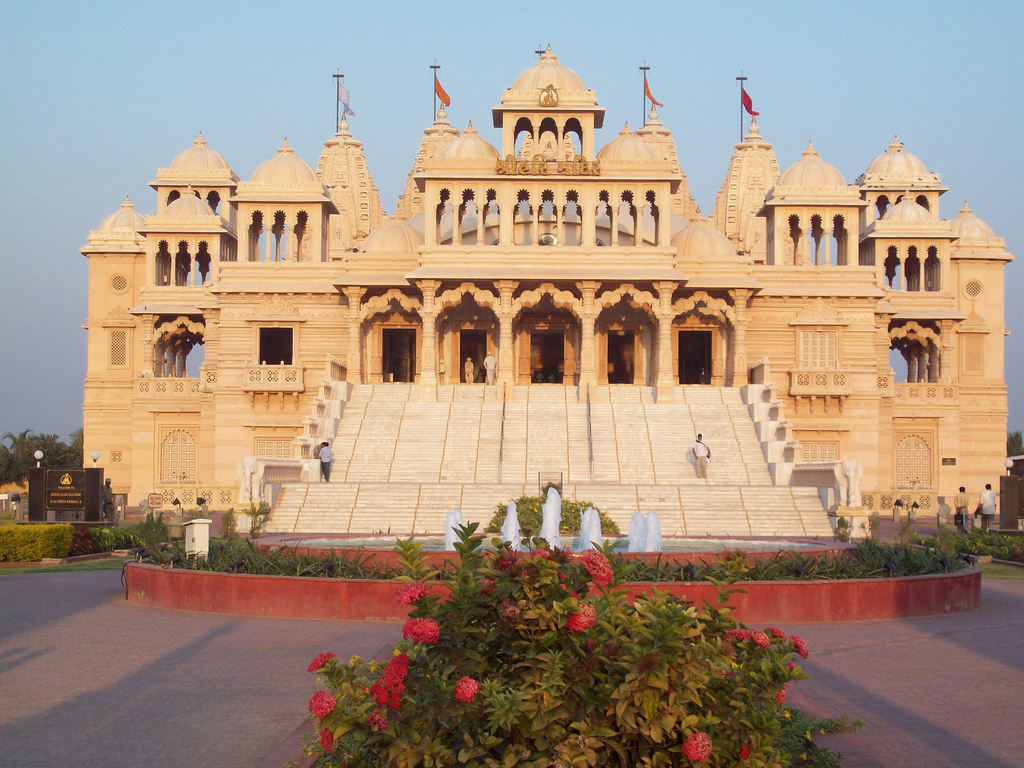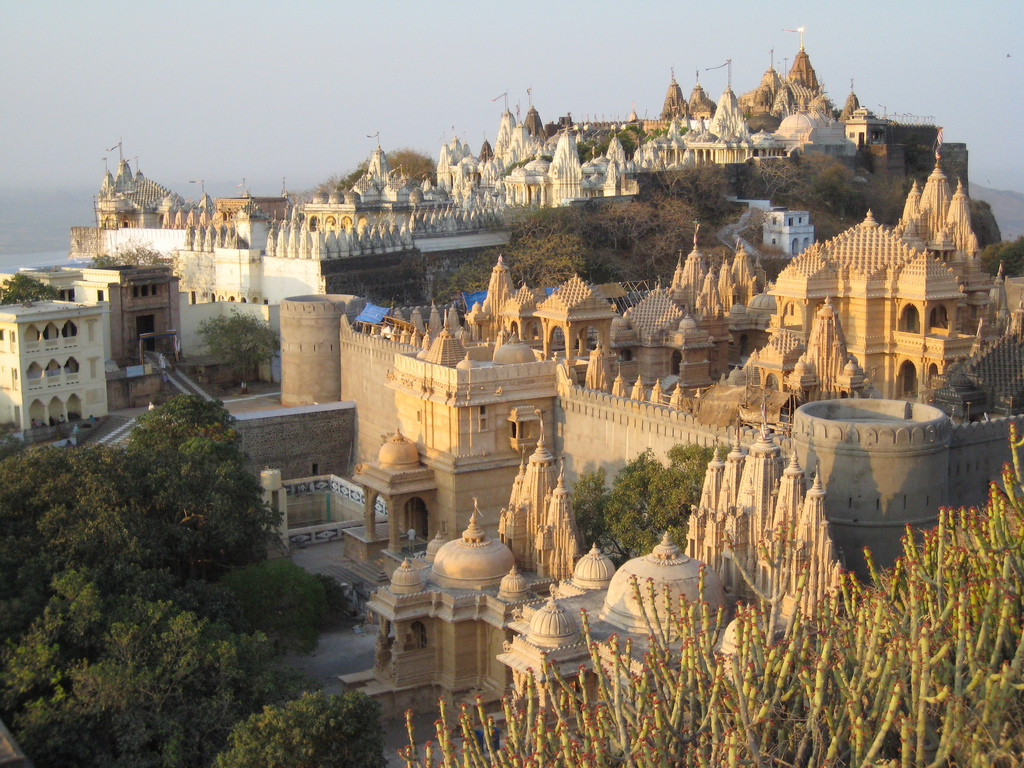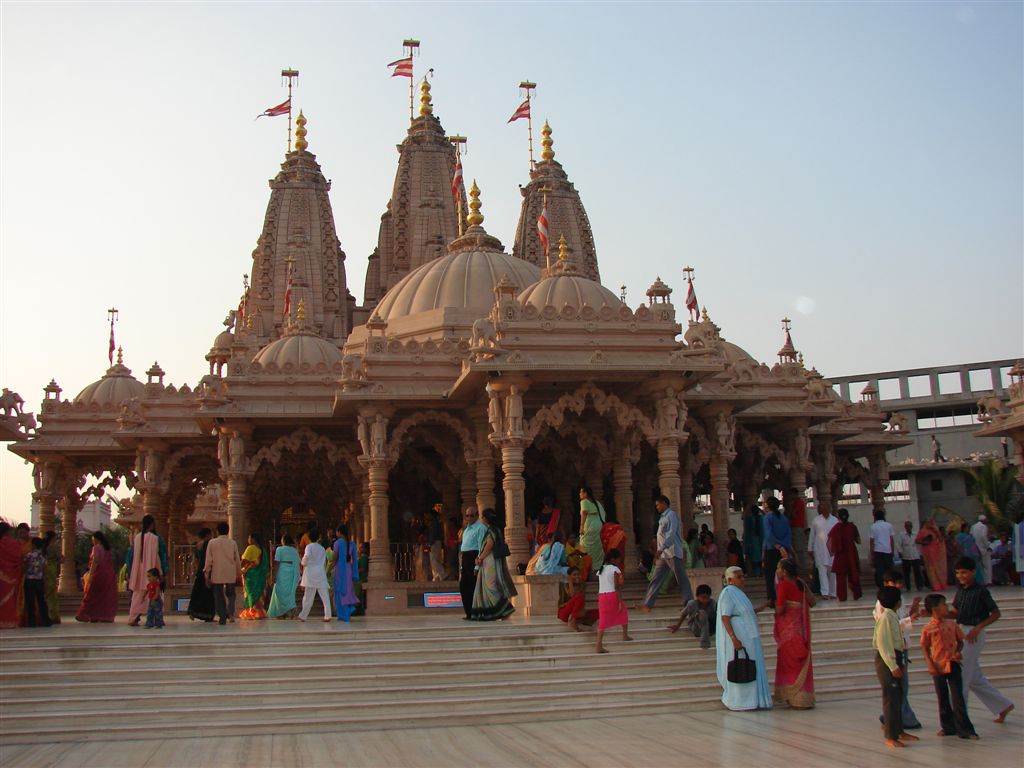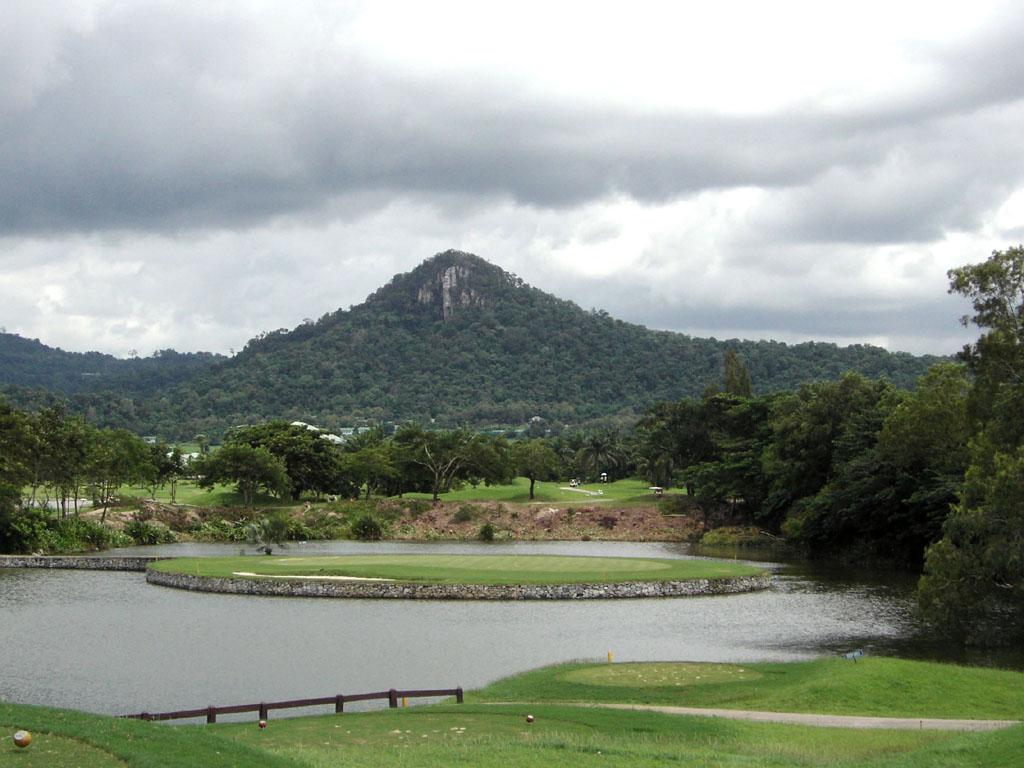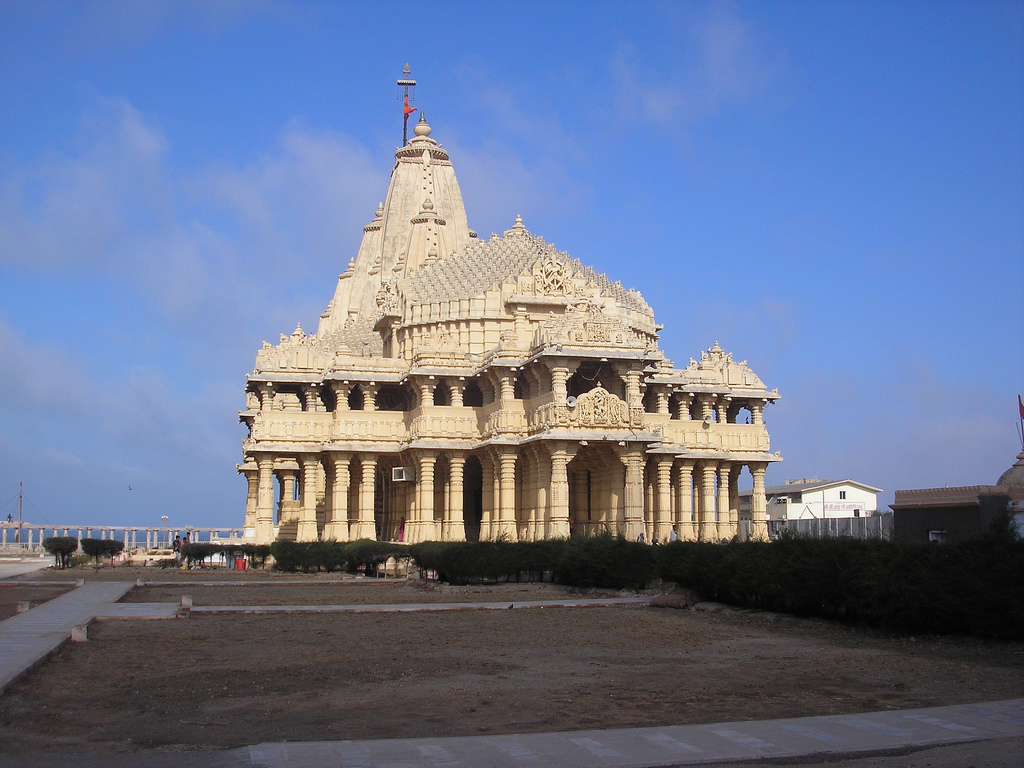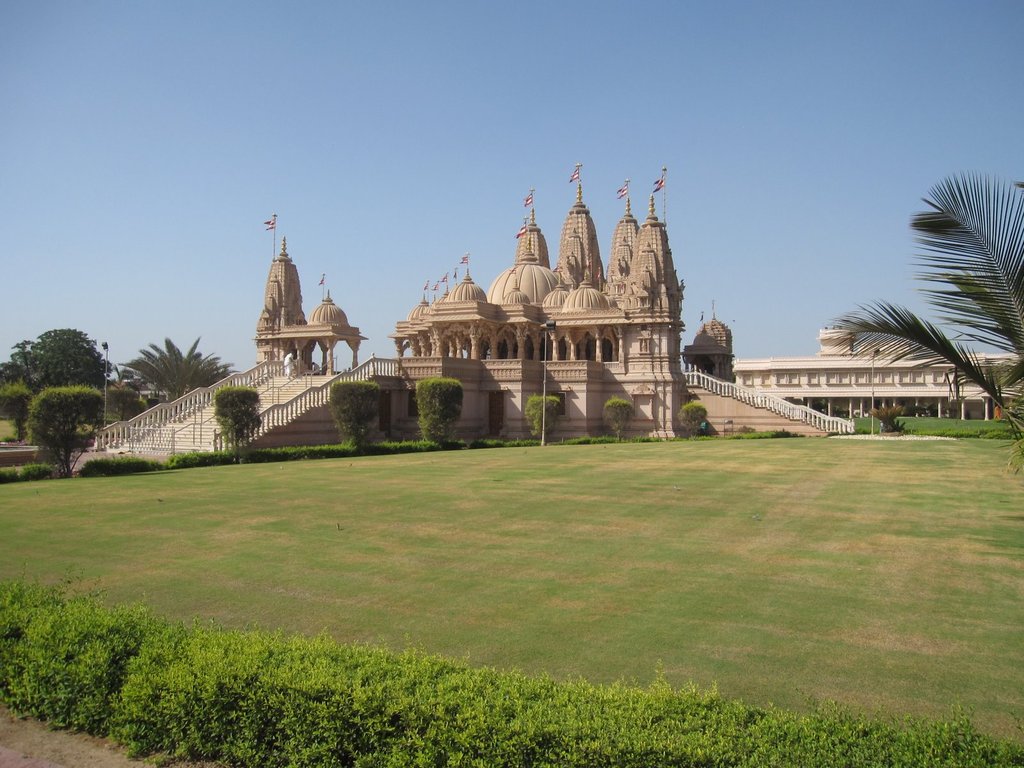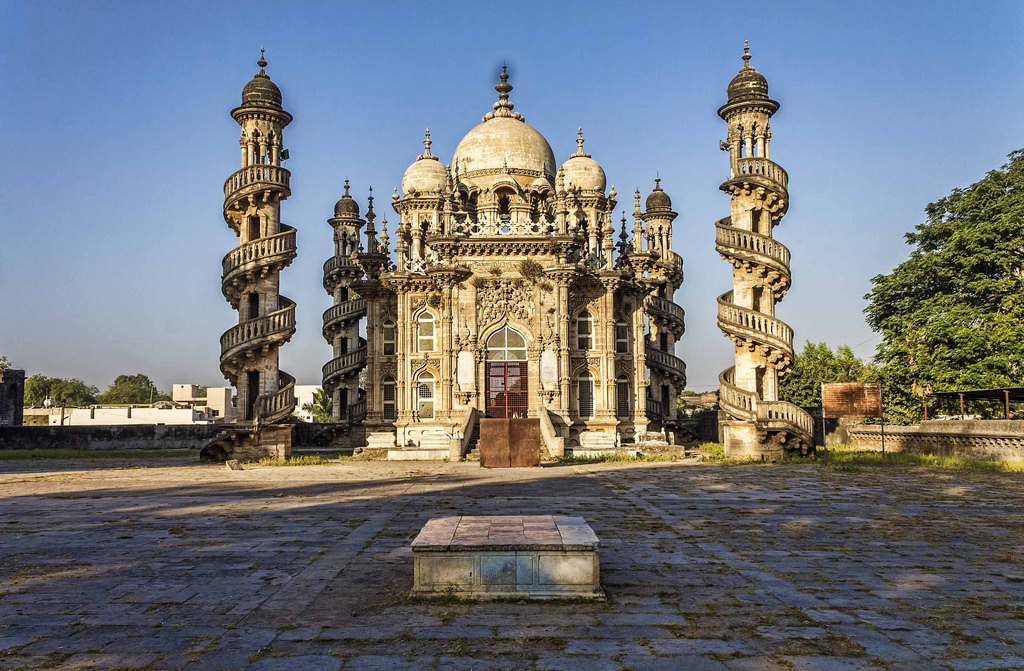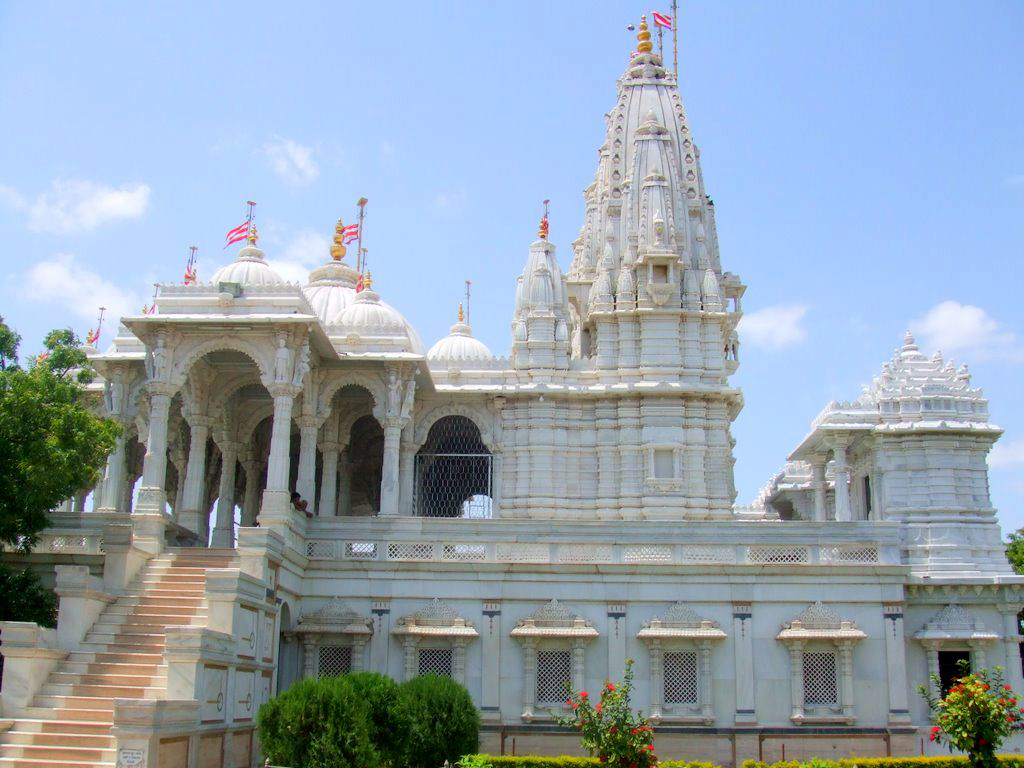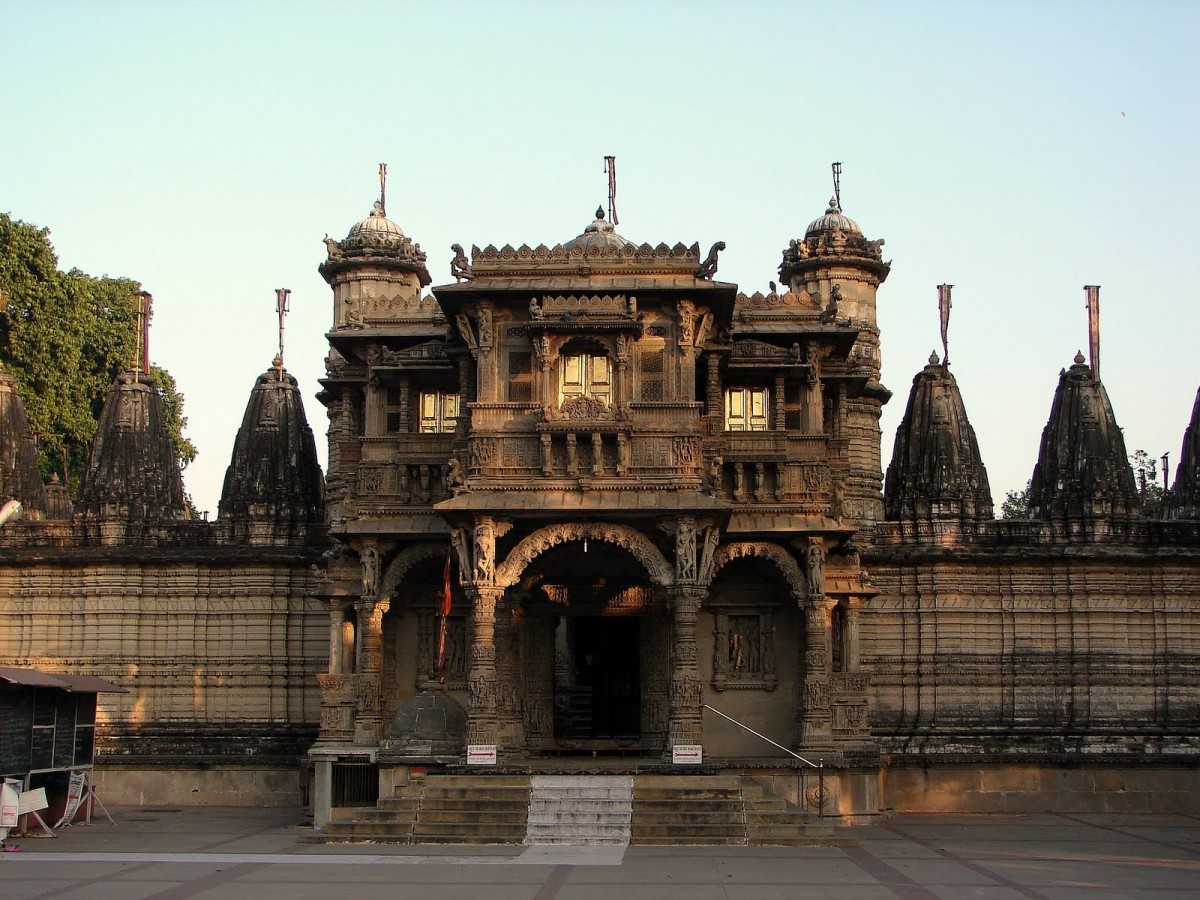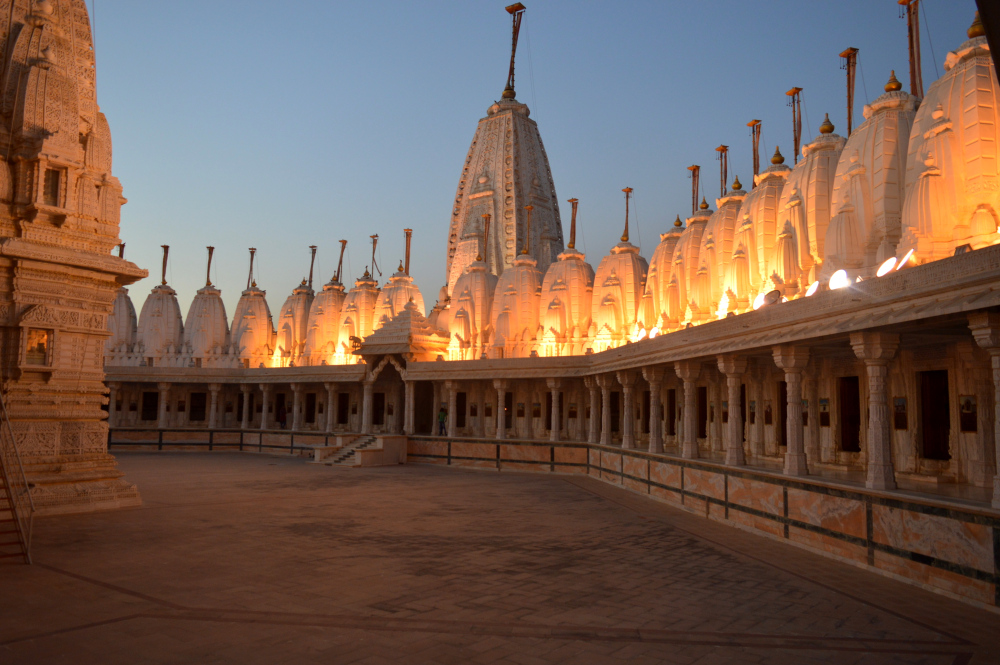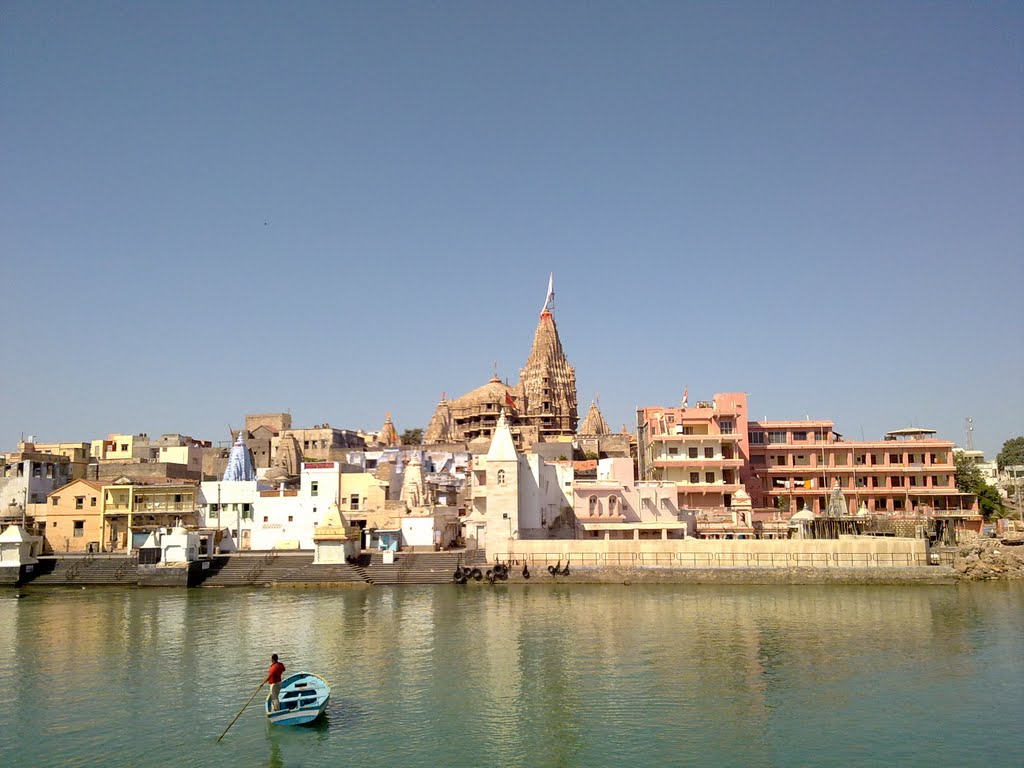
Jamnagar Tourism and Travel Guide:
History of Jamnagar: The founder of the princely state of Jamnagar was the Great Jam Rawal, who descended on the northern coast of Kathiawar in 1535 A.D Jam Rawals father Jam Lakhaji ruled in Terabanu in Kutch.Jamnagar According to bardic chronicles, Jam Lakhaji had two cousins Tamachi Deda and Hamirji Jadeja, they envied his reputation for valor. Their envy was hightened by the fame of Jam Lakhaji at the siege
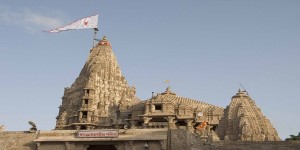
of Pawagadh. So largely did he contribute to its capture by Bahadurshah, the Emperor of Gujarat, that he was bestowed 12 villages by him. As Jam Lakaji was going to take possession of his new fef, he was treacherously killed by his cousins Tamachi Deda and Hamirji Jadeja. Jam Lakhajis son Jam Rawal escaped and on growing up, took vengeance of his fathers murder in the same manner by killing Hamirji Jadeja Hamirjis two sons Khengarji and Sahibji fled to Delhi and after twelve months of waiting to meet the Great Moghul Emperor Humayun, they got the chance to join the crowd going along with the Emperor for lion hunting.
During the lion hunt, they got the chance to kill the lion just when it was going to attack the Emperor. As a reward, an army of 1,00,000 was sent with them to regain back their kingdom.
When Jam Rawal heard of the two princes coming back to the Kutch with the imperial army, he started getting ready for the battle. On one night, Goddess Ashapura came in his dream and told him that as he had broken the oath taken on her name about not killing Hamirji, even though, he was the person responsible for the death of his father. She should have punished him, but as he had at all other times honored her. So he should no longer dwell in Kutch but cross the sea and take Kathiawar as a dwelling place. Upon awakening he called his counselors and discussed the dream, they agreed that he must leave Kutch and found for himself a Kingdom across the Gulf. So Jam Rawal along with his soldiers and many traders marched out. On the way he killed and conquered the territory of King Tamachi the other conspirator in the killing of his father, and he also conquered the town of Dhrol and its dependencies and gave them to his brother Hardholji, who was later killed in battle during that period, and the State of Dhrol was given to his eldest son, Jasoji.
Thus Jam Rawal made himself master of a great territory and the need for a capital arose.The story goes like this, that once on a hunting trip on the land of present day Jamnagar, a hare was found to be brave enough to turn on the Jamnagarhunting dogs and putting them to flight. Deeply impressed by this, Jam Rawal thought that if this land can breed such hares, if his capital was built on this land, the men born here would besuperior than other men.
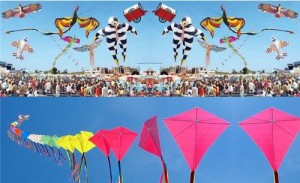
He counsulted his astrologers and wise men, and the day chosen for laying the foundation stone was the 7th day of the bright half of the month of srawan, VS 1956. (August 1540 AD) on the banks of two rivers Rangmati and Nagmati and named it Nawanagar meaning new town. Nawanagar eventually came to be known as Jamnagar meaning the town of the Jams.
Climate of Jamnagar:
The climate of Jamnagar district is generally pleasant. The summer season extends from March to June with daytime temperature reaching 42°C. The monsoons are from July to September. Winter season sets in during October and extends till February. In association with cyclonic storms or depressions in the Arabian Sea in the post monsoon months and to a lesser extent in May and June, the district experiences strong winds and torrential rain. Thunderstorms occur in June and July. In the cold season, occasional fog occurs. The summer temperature ranges from 24°C to 42°C and winter temperature ranges from 10°C to 24°C.
How to Reach Jamnagar?
By Air: Jamnagar is accessible from all the major parts of India and reaching here by air is no problem. Its airport is situated at distance of 10 km from the city. There are daily flights to Mumbai from the Jamnagar airport. Indian airlines, with other private airlines, link the city with other the important cities of the country.
By Rail: Jamnagar lies on the Western railway network and is connected by regular trains to important cities like Mumbai, Ahmedabad, Delhi and Kolkata. There are express as well as inter city trains between Jamnagar and Ahmedabad. Apart from this, there are popular trains between Jamnagar and Mumbai, like the Saurashtra Mail and the Saurashtra Express.
By Road: Jamnagar has a fairly good network of roads and is even well connected via National and State Highways. There
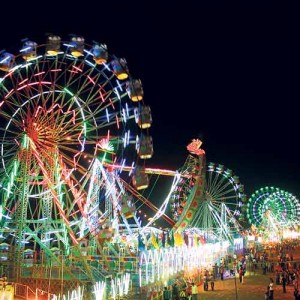
are intra state buses running between Rajkot, Porbander, Bhuj, Bhavnagar, Ahmedabad, Baroda and Surat. TheJamnagar State Transport Corporation runs several buses at a regular interval to all the major cities and towns of Gujarat as well as other states of India. There are also private coaches that provide connectivity with all the comfort.
Shopping in Jamnagar:
The Bandhani `tie-and-dye’ of Jamnagar is well known the world over
Apart from these, artifacts like Bangles with inlay of brass, Beetle nut crackers, agate paperweights; Kum kum, Kajal, Surma, ; brass covered wooden chests etc, are available at the Khadhi Bhandars around Hotel President.
Modern articles can also be bought from around the city.
One can easily spend a couple of hours exploring the lanes leading out from Lindi Bazaar & Chandni Bazaar
It’s a unique expression of a very time-consuming process of tying thousands of tiny knots in a piece of fabric that has first been folded upon itself a number of times. This is then dyed in several stages using different colors. The knots are pulled apart and the fabric is unfolded to reveal a repeating pattern in a variety of hues. The process, believed to have been used in the area for up to 5000 years, is used for Saris, Shirts, Shawls, Bed sheets, Curtains, Table Cloths, Bags, and other items.
‘Bandhani’ (tie and dye fabric) of Jamnagar, Mandvi and Bhuj are famous for their intricate designs and patterns, which are used, in wedding outfits called as ‘gharchola, odhni’ and sarees.
The tie-dyed fabrics of Gujarat are perhaps the best produced in India. Also known as ‘Bandhej’, it is produced on superfine cotton ‘mulmul’, muslin sometimes combined with gold checks and motifs worked in the ‘jamdani’ technique.
Dyeing is a hereditary art. In the past cloth was dyed in colours extracted from trees and flowers.
The highest intensity of Bandhini dyeing is in Kutch, but some of the best works are from Jamnagar.
Jamnagar The printed portion of the fabric are pinched and pushed into small points and then knotted with 2 or 3 twists of thread. The knotted parts remain uncoloured and the fabric is dyed in the lightest shade first, retied and dyed in the darker colour.
The fabric may be tied and dyed several times, depending on the number of shades in the final colour scheme. The price of the ‘bandhani’ depends not only on the fabric, but also on the number of times it has to be tied and dyed and on the intricacy of the design.
The Bandhani, tie and dye variety of sari is a very popular women’s wear. It involves an intricate process of tying knots on the fine white fabrics, which are dipped in colours. The hues of deeper shades are used over the previous ones to form the coloured background of the cloth.
‘Bandhani’ sarees are easily available in all the bazaars and shopping centres of Jamnagar and here you can also find them brocaded with fine gold thread zaris.
The Vanza Bandhani Shop at Inderaprashth Shopping Centre, owned by Mr. Yogesh Vanza has an extensive and beautiful collection of new and old designs
Fairs & Festivals of Jamnagar: Navratri is the festival of nine nights in honor of Goddess Ambaji. Both men and women congregate in public to perform the dance called Garba Ras.
Janmashtami is celebrated in a big way in Jamnagar on the twenty-third day of Shravan of the Hindu calendar (August/September). The day marks the birth of Lord Krishna.

